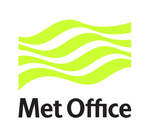
Maintained by: Holly Titchner
Last updated: 10/05/2010
Hosted by: Met Office Hadley Centre
| Met Office Hadley Centre observations datasets |
| > Home > HadAT > |
NEW - Channel 3 equivalents for HadAT2 are now available
In the interests of having MSU-equivalent HadAT timeseries available for immediate comparisons with these satellite-derived data, we have created here a set of MSU equivalent measures under very specific criteria. Although justifiable, many of the decisions we have made are subjective and alternative choices could be made that would appear, at least initially, to be equally plausible. We hope to find the time in future to adequately resolve the sensitivity to these choices and come up with a more robust "how to". This page describes the methodology we have employed and includes final MSU equivalent measures for our monthly HadAT2 timeseries as well as a number of intermediate products required to produce these from the Temperature on Pressure Levels data.
Far more information on the real MSU instruments, their measurements and their climate timeseries are available from the University of Alabama in Huntsville and Remote Sensing Systems (external links). There have been additional efforts by other groups to create climate datasets from MSU but, to date at least, the groups involved have not released their data freely to the research community. As and when this is no longer the case we will also link to the data and websites for these groups from here.
Before creating fully gridded products we felt it necessary to calculate geographically variant weighting fields taking into account the local surface pressure and characteristics. We utilise the static weighting functions on a 5 hPa resolution provided by the University of Alabama in Huntsville group that have been used in numerous scientific studies to date. These have very slightly different weightings over land and ocean for channel 2 and channel 2LT reflecting the different average emissivity characteristics of these surfaces, and for all channels assume a standard atmospheric profile. Of course, the reality is significantly more nuanced than this and effectively these weighting functions provide investigators with just enough rope to go and hang themselves with. Because we have only temperature data we do not attempt a full radiative reconstruction which would additionally require information on the vertical distribution of at least water vapour, and possibly other trace gases. At least for large-scale averages the simple approach used here has been shown to be adequately similar to a full radiative-transfer code.
| HadAM3 resolution monthly weightings | Netcdf file (6.7 Mb) |
Channel 2LT ASCII file (compressed,0.3 Mb)
Channel 2 ASCII file (compressed,0.3 Mb) Channel 4 ASCII file (487 b) |
| HadAT resolution monthly weightings | Netcdf file (1.2 Mb) |
Channel 2LT ASCII file (compressed,0.09 Mb)
Channel 2 ASCII file (compressed,0.09 Mb) Channel 4 ASCII file (487 b) |
| HadAT resolution seasonal weightings | Netcdf file (0.4 Mb) |
Channel 2LT ASCII file (compressed, 0.03 Mb)
Channel 2 ASCII file (compressed, 0.03 Mb) Channel 4 ASCII file (488 b) |
To create gridded timeseries we use collocated observations from HadCRUT3 to provide our surface observations and HadAT2 to provide the upper-air observations. Ideally, we would use skin temperature rather than near-surface temperature as it is the skin temperature that the satellite instrument is sensing. On short timescales these measures can be very different, but on the monthly and longer timescales considered here they should exhibit similar variability and trends in the absence of substantial changes in land cover/land use and sea ice extent. Any MSU channel equivalent measure is calculated only if the sum of the weights that can be applied (non-missing data) is greater than 80%. This means that there are less data for Channel 4 (stratospheric channel) than either 2 or 2LT, particularly early in the record when balloons were more prone to burst. No criteria have been applied as to the maximum number of consecutive levels that can be missing or any other criteria that could be used to refine our estimates. If over time there have been changes in reporting performance then there may be spurious trends introduced even if the HadAT data themselves are homogeneous so investigators must take great care in utilising these data.
As of July 2009 we have included Channel 3 equivalents for HadAT2 in the files below.
| MSU equivalent timeseries | Netcdf file (8.9 Mb) | ASCII file (compressed, 3.0 Mb) |
| Zonal, tropical and global timeseries | Netcdf file (0.3 Mb) |
Zonal ASCII file (0.9 Mb)
Tropical ASCII file (0.02 Mb) Global ASCII file (0.02 Mb) |
Commercial and media enquiriesYou can access the Met Office Customer Centre, any time of the day or night by phone, fax or e-mail. Trained staff will help you find the information or products that are right for you. |
 |
Maintained by: Holly Titchner |
© Crown Copyright
|